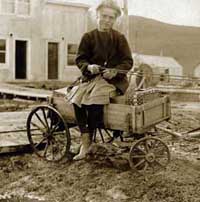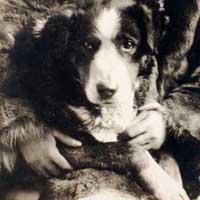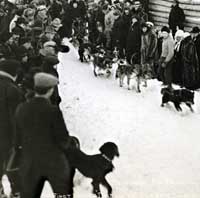From Working Dogs to Racing Dogs

In the late 1890s, most of the dogs in Alaska were working dogs, kept to freight gear and mail. When prospectors followed the gold rushes north to Dawson and Nome, there were not enough local dogs to fill the demand. Consequently, dogs of all kinds –Irish setters, Saint Bernards, German shepards, pointers, retrievers, and mutts– were brought north; some of them, like Buck in Call of the Wild, stolen, because the demand and the prices were high. Inevitably, with time on their hands during the long winters, people began to wager on which dogs could go the farthest and the fastest.
The first official sled dog race, the All Alaska Sweepstakes, was organized in Nome in 1908. Describing the race from Nome to Candle (a round-trip distance of 408 miles), “Scotty” Allan wrote in Gold, Men and Dogs, “Financially, the race was as big an event in Alaska as the Kentucky Derby is to the racing world. The betting was always very heavy. Sometimes there was as much as $130,000 on the books, with hundreds of side bets for lesser amounts.”
Although the All Alaska Sweepstakes became the premier event, the popularity of shorter races spread across the Interior. In Iditarod, in 1912, a team of Irish setters surprised everyone by winning the 62-mile St. Patrick’s Day race. A couple of years later, in 1914, the communities of Iditarod and Flat held the first ladies’ sled dog race. As reported in the Iditarod Pioneer, “From start to finish, the bulletin boards were surrounded by eager and excited crowds, and the entire populace seemed to have turned out to witness the contest.”
The 1915 All Alaska Sweepstakes marked the beginning of another racing legend, that of Leonhard Seppala and his Siberian dogs who won the race three years in succession. When the Ruby Kennel Club invited Seppala to their derby in 1916, Seppala drove his team more than 400 miles from Nome to Ruby and then beat the course record. In 1925, Seppala achieved his peak of fame when he and his team mushed the diptheria serum from Nenana to Nome. The Iditarod race today is a commemoration of Seppala and other early mushers who are a part of Alaska’s colorful past.















